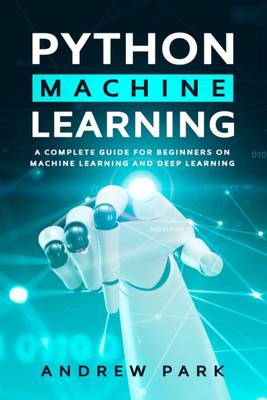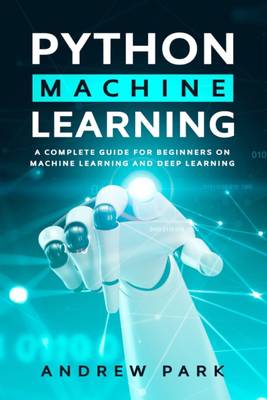
- Retrait gratuit dans votre magasin Club
- 7.000.000 titres dans notre catalogue
- Payer en toute sécurité
- Toujours un magasin près de chez vous
- Retrait gratuit dans votre magasin Club
- 7.000.0000 titres dans notre catalogue
- Payer en toute sécurité
- Toujours un magasin près de chez vous
Python Machine Learning
A Complete Guide for Beginners on Machine Learning and Deep Learning with Python
Andrew ParkDescription
Today, we live in the era of Artificial Intelligence. Self-driving cars, customized product recommendations, real-time pricing, speech and facial recognition are just a few examples proving this truth. Also, think about medical diagnostics or automation of mundane and repetitive labor tasks; all these highlight the fact that we live in interesting times. From research topics to projects and applications in different stages of production, there is a lot going on in the world of Machine Learning.
Machines and automation represent a huge part of our daily life. They are becoming part of our experience and existence. This is Machine Learning. Artificial Intelligence is currently one of the most thriving fields any programmer would wish to delve into, and for a good reason: this is the future!
Simply put, Machine Learning is about teaching machines to think and make decisions as we would. The difference between the way machines learn and the way we do is that while for the most part we learn from experiences, machines learn from data.Starting from scratch, Python Machine Learning explains how this happens, how machines build their experience and compounding knowledge. Data forms the core of Machine Learning because within data lie truths whose depths exceed our imagination. The computations machines can perform on data are incredible, beyond anything a human brain could do. Once we introduce data to a machine learning model, we must create an environment where we update the data stream frequently. This builds the machine's learning ability. The more data Machine Learning models are exposed to, the easier it is for these models to expand their potential.
Some of the topics that we will discuss inside include:
What is Machine Learning and how it is applied in real-world situations
Understanding the differences between Machine Learning, Deep Learning, and Artificial Intelligence
Supervised learning, unsupervised learning, and semi-supervised learning
The place of Regression techniques in Machine Learning, including Linear Regression in Python
Machine learning training models
How to use Lists and Modules in Python
The 12 essential libraries for Machine Learning in Python
What is the Tensorflow library
Artificial Neural Networks
And Much More!
While most books only focus on widespread details without going deeper into the different models and techniques, Python Machine Learning explains how to master the concepts of Machine Learning technology and helps you to understand how researchers are breaking the boundaries of Data Science to mimic human intelligence in machines using various Machine Learning algorithms.
Even if some concepts of Machine Learning algorithms can appear complex to most computer programming beginners, this book takes the time to explain them in a simple and concise way.
Would You Like To Know More?
Scroll up and click on the BUY NOW button to get your copy now!Spécifications
Parties prenantes
- Auteur(s) :
- Editeur:
Contenu
- Nombre de pages :
- 124
- Langue:
- Anglais
- Collection :
- Tome:
- n° 4
Caractéristiques
- EAN:
- 9781676467687
- Date de parution :
- 17-12-19
- Format:
- Livre broché
- Format numérique:
- Trade paperback (VS)
- Dimensions :
- 152 mm x 229 mm
- Poids :
- 176 g

Les avis
Nous publions uniquement les avis qui respectent les conditions requises. Consultez nos conditions pour les avis.






